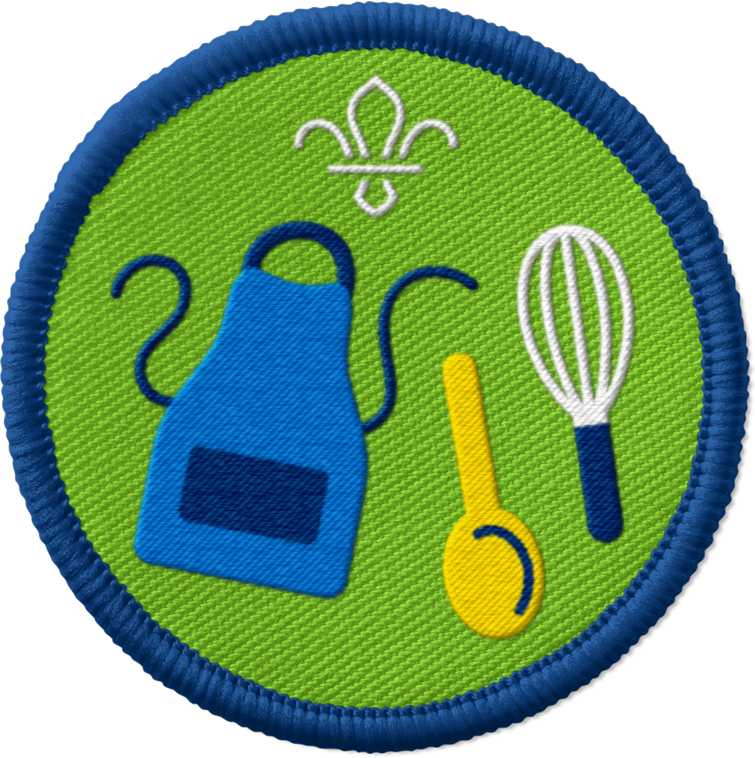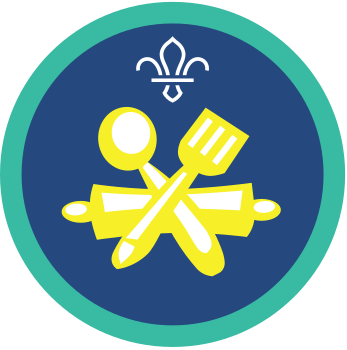
Bake Jerusalem sesame bread
You’ll need
- Ingredients (see recipe)
- large bowl
- Jug
- Weighing scales
- Sieve
- Wooden spoon
- Tablespoons
- Measuring jug
- Cooking brush
- Baking tray
- Greaseproof paper
- Tables
- Access to oven
- Access to sink
- Washing up liquid
- Heatproof gloves
- Heatproof surface
- Clean tea towels to cover bread
- Timer
- First aid kit, including for burns
- A way to put a fire out, such as a fire extinguisher
Before you begin
- Use the safety checklist to help you plan and risk assess your activity. Take a look at our guidance to help you carry out your risk assessment, including examples.
- Make sure all young people and adults involved in the activity know how to take part safely.
- Make sure you’ll have enough adult helpers. You may need some parents and carers to help if you’re short on helpers.
- Check for allergies, intolerances, fasting, food-related medical conditions, eating disorders, food sensitivities or dietary requirements, then adjust the food items used as needed. This may include making sure there’s no cross-contamination of packaging and no cross-contamination during the storage, preparation, cooking and serving.
- You may need to use separate chopping boards, equipment and utensils, such as tongs or toasters, for different dietary requirements, allergies and foods.
- If you’re unsure, check with the young person and their parents or carers. You can check with the adult directly if it’s a volunteer or helper.
- Some people may not like certain food textures or tastes and that’s OK. People don’t need to use all the ingredients if they don’t want to, and no-one should be made to try foods if they don’t want to. You can try to find an alternative for them.
- Take a look at our guidance on food preparation.
- You could run our kitchen hygiene activities before this session.
- Always have a hand washing station, washing hands regularly throughout this activity, and taking extra hygiene precautions when handling food. If you're using gloves to prepare food, treat them like your hands. Wash any gloves before using them and in between if necessary.
- Spray and wipe down all working surfaces and tables with anti-bacterial spray before and after use, and wash any equipment you’re using in hot soapy water.
- Take extra hygiene precautions when handling raw meat, such as regular hand washing.
- Keep raw and ready-to-eat foods separate, having separate equipment for raw and cooked meat, and washing up equipment as soon as it's been used.
- Make sure food is properly cooked before you serve it. Always cut through poultry and meat to make sure it's fully cooked, especially when barbecuing food. Make sure it's cooked slowly and thoroughly, and not just done on the outside.
- Always follow cooking instructions and never use food past its use-by date.
- Keep food out of the fridge for the shortest time possible.
- At the start of this activity, remind everyone of kitchen or indoor cooking safety rules and how to act safely. Always tie hair back, tuck in neckers and loose clothing, and wear closed toe shoes. Take a look at our kitchen safety tips.
- You may want to run a demonstration on how to use the equipment safely, such as for cooking or chopping ingredients. You could use our kitchen safety activities before this session.
- Make sure any cooking equipment or heat sources, such as ovens and hobs, always have adult supervision, including during free time and arrival times. If anyone struggles with sensing danger, you should consider providing extra adult supervision. This could be especially helpful at unstructured times, such as breaks or waiting to cook.
- Remind everyone to keep their fingers away from any knives. You may want to use blunt, child-friendly knives, or you could also have ingredients pre-chopped.
- If you’re using a gas stove, tabletop hob plates or a mini oven, make sure it’s on a stable heatproof surface and in a clear and open area, with plenty of ventilation. Gas appliances and sources can increase risk of carbon monoxide exposure. Take a look at our guidance on different cooking methods and carbon monoxide.
- You may want to put child-safe locks on cupboard doors to prevent access by young people, especially for cupboards containing matches, cleaning products or chemicals.
- People can work in small groups or as a whole group to bake or cook. Each group should have adult supervision.
- You may want to be in groups, but everyone to use the same cooking source, rather than having each group have their own.
- You may wish for groups to make or prepare the ingredients in a wider, more spacious area, then invite each group into the kitchen to cook one at a time.
- Remember the groups not using the kitchen or cooking will still need to be supervised, always following the Yellow Card.
- Make sure you have all the ingredients ready. You may want to pre-chop or pre-measure some activities.
Planning and setting up the activity
- Remember to give a safety briefing for the cooking equipment and methods you’re using. You may wish to demonstrate the methods or activity before you all start cooking.
Sesame Bread Recipe
Ingredients Serves 5
- 593ml warm water
- 1 tablespoon of instant yeast
- 1 tablespoon of sugar
- 750g of plain flour
- 1 tablespoon of salt
- 59ml olive oil
- 69ml milk (for brushing)
- 237mg roasted sesame seeds.
Cook Time
Prep time: 1 hour 15 minutes
Cook time: 30 minutes
Running the activity
- Gather everyone together and tell them you’re going to be making Ka’ek Al Quds, which is a Palestinian bread from Jerusalem. Explain that sesame bread in Jerusalem is called Ka’ek Al-Quds. Ka'ek just means cake or biscuit and al Quds translates to the city of Jerusalem in Arabic.
- Ask everyone to wash their hands with warm water and soap, then get into groups of five. Each group should collect the ingredients and equipment, then find a space. You may want to provide printed copies of the recipe.
- An adult volunteer should preheat the oven to 180° C for a fan oven or Gas Mark 6.
- Someone should weigh out the flour, then sieve it carefully into the large bowl. Next, add the warm water and yeast into a jug, then mix them together.
- Make a small well in the centre of the flour, then pour the water and yeast mixture into the well. Now add salt and oil in.
- Mix all the ingredients in the bowl to form a dough. The dough shouldn’t be too sticky. If it is, you can add a small amount of flour into the mixture. If the dough is too stiff, you can add a small amount of water into the mixture.
- Add a small amount of flour onto a clean surface, such as a table or counter, and place your dough on it. Someone should knead the dough for around a total five minutes. This can be done by stretching it away from you with the heel or knuckles of one hand and fold it back over the top towards you. Keep repeating the stretch and fold process again and again. Place the dough back in the bowl when it’s been kneaded.
- Next, brush the bowl and top of the dough with some oil, before covering it with a clean tea towel.
- Leave the dough to rise in a warm, safe place for about an hour. A warm kitchen worktop, sunny windowsill or somewhere close to a radiator often works well, but remember to keep any windows closed. While the dough’s rising, everyone could tidy up or take part in another activity.
- Once the dough has risen, ask everyone to wash their hands before baking again.
- Cut out a piece of greaseproof paper the size of the baking tray and place it on to the tray. Lightly dust the tray with flour.
- Someone should collect the dough, then divide the dough into five small balls, depending on the size of your groups. Place them on the baking tray and cover them with the tea towel and let them sit for another 15 mins.
- Everyone should wash their hands and take a dough ball, then roll it into a long sausage shape. Once it’s rolled out, connects both ends of the sausage together to create a long oval shape. This is the shape of a Ka’ek.
- Place the Ka’eks on top of the greaseproof paper on the baking tray. Make sure to space each one out, so the dough has enough space to rise in the oven.
- When ready, brush one side of the Ka’ek with a small amount of milk, then cover it with sesame seeds. Remember to turn it over and repeat this on the other side, so both sides are covered in sesame seeds.
- Cover the Ka’eks again, then let them sit for another 15 mins.
- An adult should use protective equipment to place the trays in the oven. Bake the bread for 15-20 mins at 180° C or on Gas mark 6.
- Towards the end of the baking time, an adult should turn the heat in the oven up, so you cook one side of the bread for two minutes at the higher temperature to get a golden colour.
- Once the bread’s cooked, an adult should carefully remove the trays from the oven, using heatproof protective equipment, such as heatproof gloves. The bread should be left on a heatproof surface to one side and out of reach of young people. Remember to turn the oven off.
- Once it’s cooled, you can serve your Ka’eks.
Reflection
This activity gave everyone the opportunity to try something new and work as a team to cook some Ka’ek Al-Quds. Have you made anything similar before? How easy was it to make? What was it like following the recipe.
You had to work as a team to make the bread. How did you make sure everyone could be involved? How did you make sure everyone could share and use their skills? Did everyone get to have a turn at the different stages, such as mixing or kneading? What was it like rolling the dough out and making the shape? Did you have any problems? If so, how did you solve them? How did you make sure everyone stayed safe too?
Ka’ek Al-Quds is named after where it’s from. Can you think of any other foods that are named after where they’re from? Do you know of any foods that come from where you or someone you know lives?
Safety
All activities must be safely managed. You must complete a thorough risk assessment and take appropriate steps to reduce risk. Use the safety checklist to help you plan and risk assess your activity. Always get approval for the activity, and have suitable supervision and an InTouch process.
- Hot items and hot water
Kettles, cookers and microwave ovens produce a lot of heat by the very nature of them. Caution is needed when in contact with items that have been heated and young people should use them under adult supervision. Use on a suitable surface, protecting it if necessary. Never leave hot items unattended and make sure there’s a nearby first aid kit, with items to treat burns/scalds.
- Fires and stoves
Make sure anyone using fires and stoves is doing so safely. Check that the equipment and area are suitable and have plenty of ventilation. Follow the gas safety guidance. Have a safe way to extinguish the fire in an emergency.
- Cooking
Teach young people how to use cooking equipment safely. Supervise them appropriately throughout. Make sure it’s safe to use and follow manufacturers’ guidelines for use.
- Food
Remember to check for allergies, eating problems, fasting or dietary requirements and adjust the recipe as needed. Make sure you’ve suitable areas for storing and preparing food and avoid cross contamination of different foods. Take a look at our guidance on food safety and hygiene.
- Flammable items
Always take care when using flammable items, especially if you’re near fire. Always follow the manufacturer’s instructions and guidelines.
To make this activity easier, you can make and knead the dough in advance of the session, just getting everyone to roll and make the shapes to save time.
- If anyone needs help or struggles with fine motor skills, give them the opportunity to work in pairs or small groups. They could also work with a young leader or an adult volunteer. The person they’re working with can help with the parts they find fiddly to do or tricky.
- If anyone struggles with fine motor skills, a funnel could be used to help them pour the ingredients into a bowl or jug.
- If you’re measuring out ingredients, anyone who struggles with maths can partner up with or join a group with someone who’s more confident at the measuring part of this activity. Alternatively, a young leader or adult could support them in the measuring part of this activity.
- Remember, some baking and cooking activities can be done either sitting or standing – people can choose whichever way is best for them. People could work with a partner, with one taking on any standing tasks and the other doing tasks seated.
- There are lots of loud noises and different smells in a kitchen or while cooking, which may overwhelm some people. People may choose to wear ear defenders while in the kitchen, take a break from the activity or prefer to stay a distance away from the activity and that’s OK. You could use fragrance free soap or washing up liquid or have items pre-chopped to reduce noise. You might also want to keep any blending, electric whisks or noisier equipment to being used in one room and shut the door, so people have an option to step out if it’s too loud. Check before and during the activity that everyone is comfortable, and make sure everyone knows that they can leave the activity at any point. It might be useful to agree a signal people can use, such as raising their hand, to stop take a break for the activity or if they need to speak to an adult.
All Scout activities should be inclusive and accessible.




